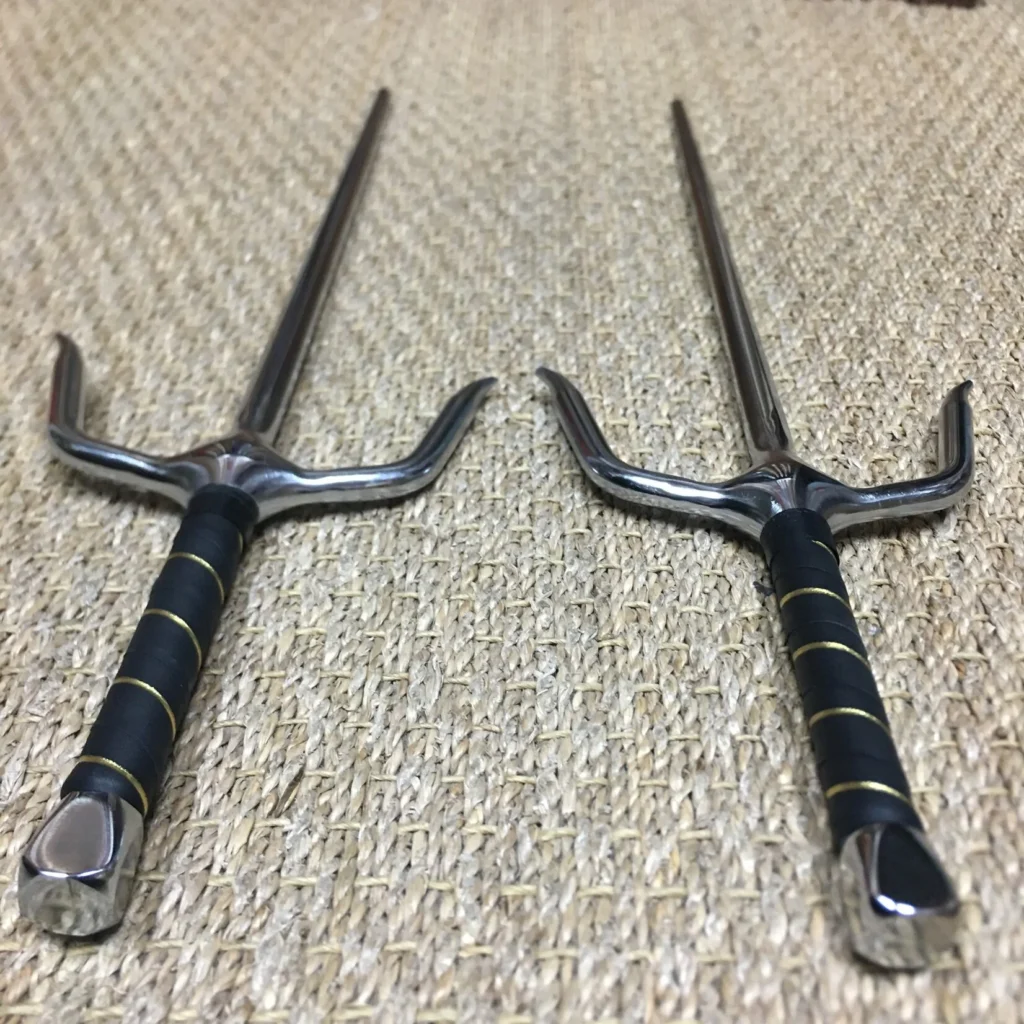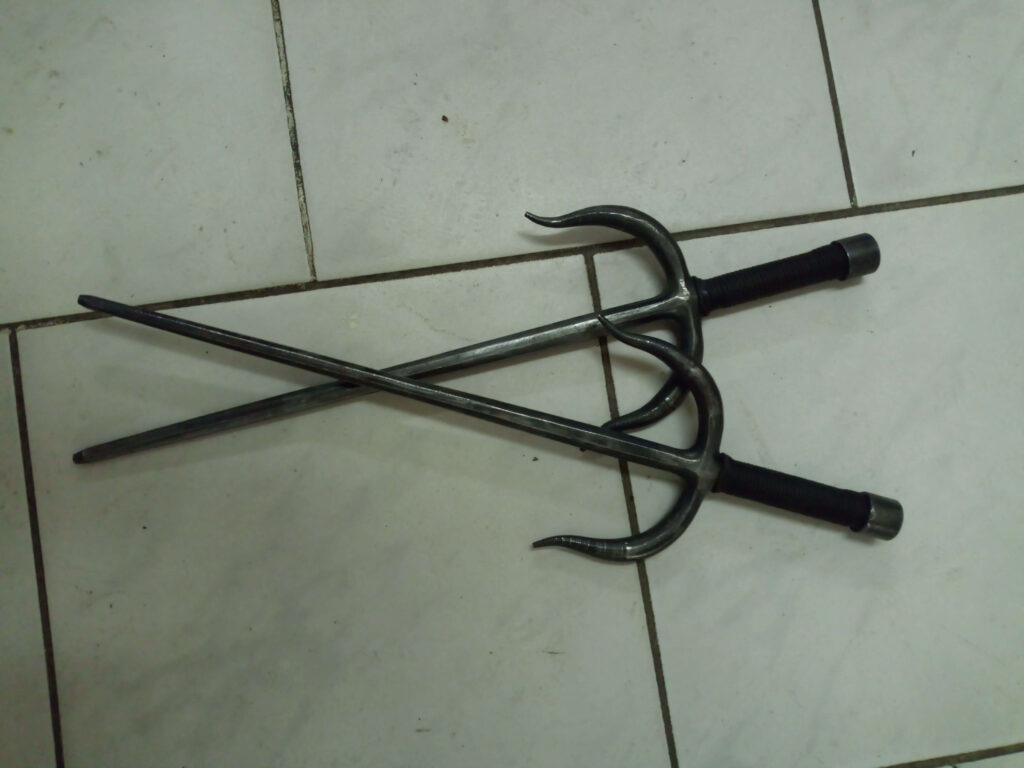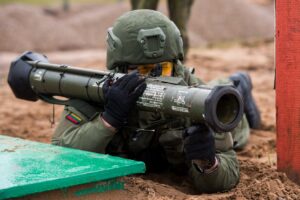The sai weapon is often misunderstood. Its shape suggests danger, but its purpose was never about slicing flesh or drawing blood. Used across Asia for centuries and perfected in Okinawan martial traditions, the sai has played a unique role in law enforcement, martial arts, and cultural symbolism. This guide explains exactly what the sai is—from history and structure to training, pop culture, and its enduring legacy.

What’s a Sai weapon?
The sai is a metal weapon with a central shaft and two side prongs. It looks sharp, but it is not meant for stabbing. Traditional sais are blunt and designed for control, defense, and disarming. Most versions are between 15 and 20 inches in length and made of solid steel.
Although the sai bears a resemblance to a dagger, it does not possess a sharp edge. Its design favors trapping and redirecting attacks. Martial artists use the sai in pairs, controlling their opponents’ weapons with the side prongs while delivering targeted strikes with the shaft.
Origins of the Sai: More Than Just Japan
Although it is popularly recognized as a Japanese weapon, the earliest forms of the sai likely originated in India. From there, it spread throughout Southeast Asia—Thailand, Vietnam, Malaysia, and China—before becoming a core part of Okinawan martial arts.
In Okinawa, the sai found purpose as a police weapon in the 1600s. An Okinawan prince named Moto Chohei formally introduced the weapon into structured practice in 1668. His influence helped define the sai as a central part of Kobudo, the traditional weapons system used alongside Okinawan Karate.
Table: Sai Use Across Asia
| Country | Role of Sai | Unique Traits |
| India | Likely origin of trident-shaped weapon | Used for ritual or control |
| Thailand | Adapted for regional self-defense | Often made with bamboo |
| Vietnam | Utilized in regional martial arts | Smaller variants observed |
| China | Similar to Chinese tridents or hooks | Some ceremonial use |
| Japan/Okinawa | Core to law enforcement and Kobudo | Twin blunt metal design |
How Is the Sai Weapon Constructed?
Traditional sais were made by blacksmiths and gunsmiths using simple techniques. The center shaft (monouchi) could be round or faceted, while the side prongs (yoku) curved outward and helped trap weapons. The tip (saki) remained blunt, never sharpened.
Handles were wrapped in leather or cord to prevent slippage during use. The weapon did not require hardened steel, as there was no edge to maintain.
Today, training supplies are made of aluminum or rubber for safety. High-quality replicas may still be forged from stainless steel and balanced for kata performance.

How Sai Weapons Were Used in Combat and Training
In the hands of trained users, the sai becomes a tool of precision. It demands focus and body coordination to control distance and movement. The sai is typically wielded in pairs, with one weapon in each hand.
Martial artists use the sai to:
- Trap blades with the side prongs
- Strike pressure points like the ribs or solar plexus
- Block sword slashes using the shaft pressed to the forearm
- Disarm opponents using rotational wrist movements
Combat with sais isn’t flashy—it’s efficient. Techniques vary across schools, but most emphasize body mechanics, footwork, and timing.
Common Misconceptions About the Sai Weapon
Pop culture has blurred the sai’s identity. Many viewers assume it’s a stabbing or cutting tool. In reality, the sai:
- Has no cutting edge
- Was meant to restrain, not kill
- Requires years of training to be effective
While Hollywood portrays it as a dagger, it actually functions more like a metal baton—focused on control, not destruction.
Sai Weapon in Pop Culture
Few weapons are as visually iconic in popular media. The sai rose to mainstream awareness thanks to characters like
- Raphael from Teenage Mutant Ninja Turtles
- Mileena from Mortal Kombat
- Elektra from Marvel Comics
These characters showcase the sai’s dual-wield form and flashy spinning techniques. However, in reality, the weapon’s true value lies in subtle, precise motion—not spectacle.
Is the Sai Still Used Today?
In real-world law enforcement, the sai is obsolete. Simpler batons, tasers, and non-lethal tools replaced it long ago. However, in martial arts, the use of the sai remains prevalent.
Practitioners train with:
- Traditional steel sai for kata and technique
- Aluminum sai for competitions or performances
- Foam or rubber sai for beginner safety
Collectors also value sais as decorative pieces, given their association with Okinawan culture and martial mastery.
Key Takeaways About the Sai Weapon
- The sai is a blunt martial arts weapon, not a knife or dagger.
- It likely originated in India and became central to Okinawan police use.
- The sai is best known for defensive techniques, such as trapping and disarming.
- It remains a core weapon in traditional Kobudo training.
- Pop culture has helped preserve its visual legacy, even if the details are misunderstood.
Final Thoughts
The sai weapon holds a unique position in martial arts history. Once a practical tool for law enforcement in Okinawa, it has become a global symbol of discipline, skill, and cultural identity. Whether hanging on a dojo wall or clutched in the hands of a comic book hero, the sai continues to challenge assumptions—proving that a weapon doesn’t have to be sharp to leave an imprint.
Share this content:












Post Comment
You must be logged in to post a comment.